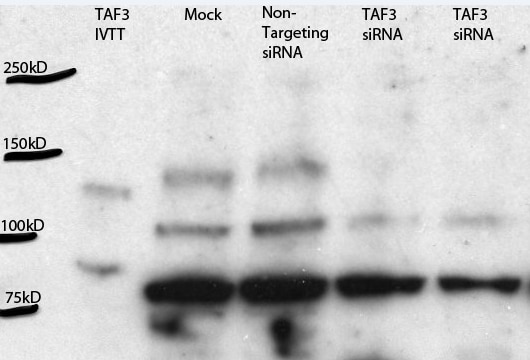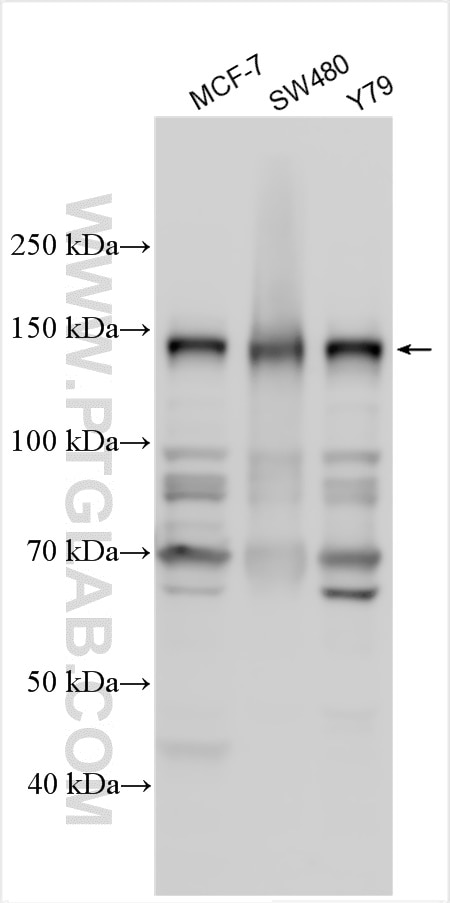- Phare
- Validé par KD/KO
Anticorps Polyclonal de lapin anti-TAF3
TAF3 Polyclonal Antibody for WB, ELISA
Hôte / Isotype
Lapin / IgG
Réactivité testée
Humain
Applications
WB, ELISA
Conjugaison
Non conjugué
N° de cat : 18901-1-AP
Synonymes
Galerie de données de validation
Applications testées
| Résultats positifs en WB | cellules MCF-7, Cellules, cellules SW480, cellules Y79 |
Dilution recommandée
| Application | Dilution |
|---|---|
| Western Blot (WB) | WB : 1:1000-1:4000 |
| It is recommended that this reagent should be titrated in each testing system to obtain optimal results. | |
| Sample-dependent, check data in validation data gallery | |
Applications publiées
| WB | See 2 publications below |
Informations sur le produit
18901-1-AP cible TAF3 dans les applications de WB, ELISA et montre une réactivité avec des échantillons Humain
| Réactivité | Humain |
| Réactivité citée | Humain |
| Hôte / Isotype | Lapin / IgG |
| Clonalité | Polyclonal |
| Type | Anticorps |
| Immunogène | TAF3 Protéine recombinante Ag13536 |
| Nom complet | TAF3 RNA polymerase II, TATA box binding protein (TBP)-associated factor, 140kDa |
| Masse moléculaire calculée | 929 aa, 104 kDa |
| Poids moléculaire observé | 140 kDa |
| Numéro d’acquisition GenBank | BC024661 |
| Symbole du gène | TAF3 |
| Identification du gène (NCBI) | 83860 |
| Conjugaison | Non conjugué |
| Forme | Liquide |
| Méthode de purification | Purification par affinité contre l'antigène |
| Tampon de stockage | PBS with 0.02% sodium azide and 50% glycerol |
| Conditions de stockage | Stocker à -20°C. Stable pendant un an après l'expédition. L'aliquotage n'est pas nécessaire pour le stockage à -20oC Les 20ul contiennent 0,1% de BSA. |
Informations générales
TAF3, also named as TAF140, is a 140 kDa subunit of Transcription initiation factor TFIID. TFIID is a multimeric protein complex that plays a central role in mediating promoter responses to various activators and repressors. TAF3 has some isoforms with 727aa (~80 kDa), 622aa and 929aa (105 kDa).
Protocole
| Product Specific Protocols | |
|---|---|
| WB protocol for TAF3 antibody 18901-1-AP | Download protocol |
| Standard Protocols | |
|---|---|
| Click here to view our Standard Protocols |
Publications
| Species | Application | Title |
|---|---|---|
MBio A targeted RNA interference screen reveals novel epigenetic factors that regulate herpesviral gene expression. | ||
Oncol Lett Identification of a novel FOXO3‑associated prognostic model in hepatocellular carcinoma |



